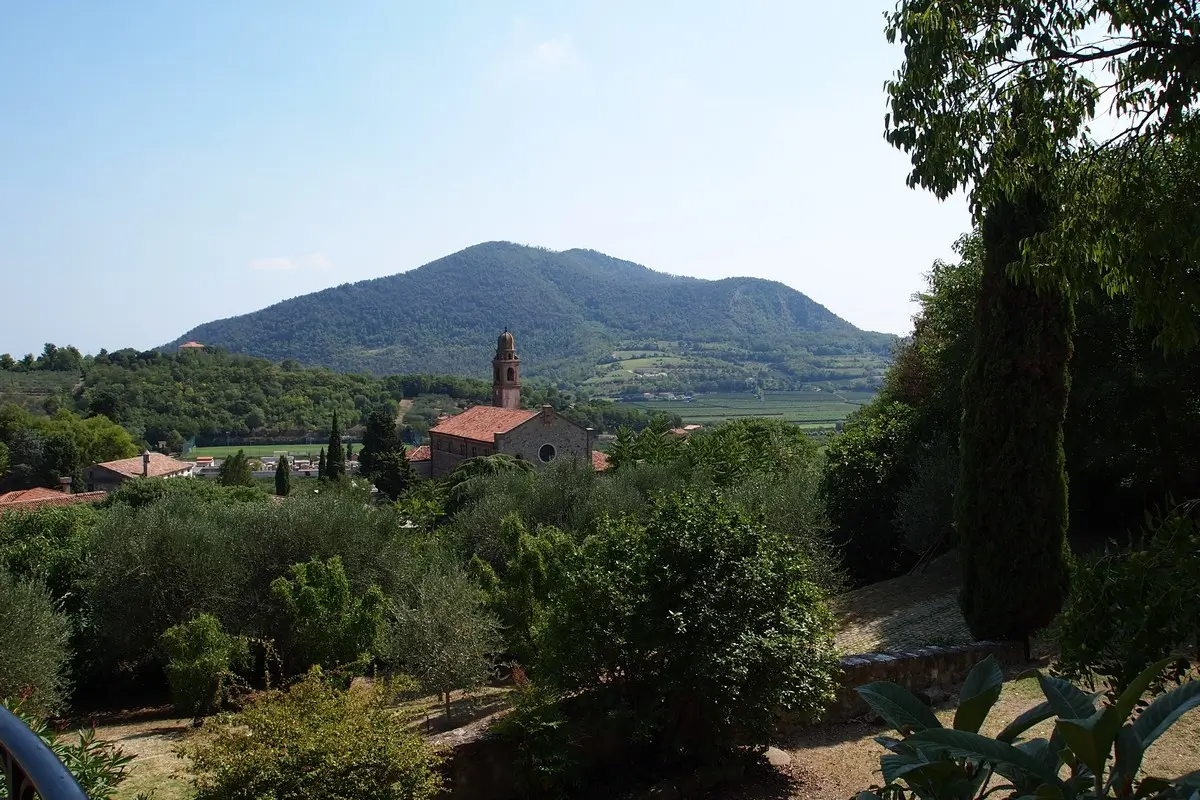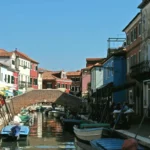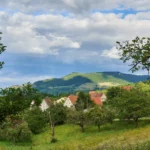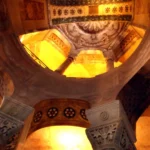Last Updated on 28/04/2023
Quite an interesting route, combining several attractions, runs along the Euganean Hills and the Canale Battaglia.
You can get here from Venice resorts (more about Lido di Jesolo) or from Padua.
What to see in Padua
Lido di Jesolo
Around Venice and Lido di Jesolo. Map of attractions
Venice. 3. Grand Canal, around the city, regatta
Venice. 2. San Marco
Venice. 1. Orientation, museums
Around Venice. Brenta Villas
Euganean Hills map

Abano Terme, Montegrotto
Almost at Padua itself there are two thermal resorts – Abano Terme and Montegrotto. There are several attractions around:
- abbey of Praglia (Abbazia di Praglia, 1, www.praglia.it). The abbey was founded at the beginning of the 12th century, the buildings date back to the 15th century. You can visit with a guided tour, which are held according to the schedule (see on the website).
- Villa dei Vescovi (2, https://fondoambiente.it/luoghi/villa-dei-vescovi). The villa was built according to the plan of Falconetto in the middle of the 16th century. Not so long ago, it was transferred into the possession of a foundation dedicated to the protection of monuments, restored and opened to the public.
Castello del Catajo
We continue along the canal. Our next stop is Battaglia Terme. Here we are interested in the Catajo castle and the park of Villa Barbarigo. Also in Battaglia Terme there is a navigation museum.
Castello del Catajo (link) was built in 1570-1573 at the request of Pio Enea degli Obizzi, the inventor of the howitzer. He came from a family that had grown rich during military campaigns and through trade. The interiors of the castle are painted by Zelotti. A park is laid out around.
Later, the castle with its rich collection went to the Habsburgs, who took everything to Vienna. Now the castle is privately owned, but you can visit it on a limited schedule.
Villa Barbarigo Pizzoni Ardemani
The villa in Valsanzibio was built in the 16th century for the Venetian family Barbarigo. Now it is a historic baroque garden with fountains and statues, a very large labyrinth (length of paths 1.5 km), full of symbols and allegories, as it should be in a baroque garden.
Such different Emo villas
Different sources and even a very good guide of the respected publishing house Bonechi (History and Art. Padua) also promise a villa Emo Capodilista next to Battaglia Terma. It seems that the Italians themselves hardly know where they have what. The searches showed the following.
The image from the book refers to a villa of this name, located in La Montecchia, a little north of Abano Terme and west of Padua, i.e. in the other place. This villa is for renting an apartment.
The most famous Villa Emo (the one that is the work of Palladio and on the UNESCO list) is located near Treviso and is reachable by the Padua-Belluno train, which must stop at Fanzolo (station near the villa, www.villaemo.org).
Between Battaglia and Monselice, there is still another Emo villa, presumably the work of Scamozzi, with a large Italian garden (number 3 on the map, www.villaemo.it, address Via Rivella 4).
More Emo villas, nice and different!
Monselice
Next train stop from Padua is Monselice.
Monselice, due to its position at the beginning of the Euganean Hills, was of great strategic importance in the past.
Fortress Monselice was especially important until the 16th century. Building 11th century was rebuilt and improved several times. In the 15th century Villa Ca Marcello was built within the walls of the fortification. The complex was badly damaged during the First World War. In 1935 it was inherited by Count Vittorio Cini, who reconstructed and recreated the medieval interiors. Therefore, now the castle-villa is also called Chini-Dalla Francesca.
In addition to the castle, the city’s attractions also include:
- the ruins of the fortifications on the top of the hill,
- the “sacred path of seven churches” (a pilgrimage road with 7 chapels dedicated to 7 basilicas of Rome)
- Villa Duodo (view only from the outside) by Scamozzi,
- the Romanesque church of St. Giustina,
- Villa Nani Mocenigo.
In mid-September, a medieval festival with a tournament takes place in Monselice.
Arqua Petrarca
5 km from Monselice station is the village of Arqua Petrarca (6 on the plan), the poet’s last refuge and one of the “most beautiful villages” in Italy.
More about Arqua Petrarca

Este
Finishing the route around the Euganean Hills, you can also visit Este. This is once the ancient city of Ateste, the most important center of the Venetian culture. Here is the Atestino Museum (rich archaeological finds of the region).
What to see in Padua
All pages about the region of Venice – #Venice
Sights of the region on the map.
Do you enjoy the site without cookies? This means that I work for you at my own expense.
Perhaps you would like to support my work here.
Or change your cookie settings here. I don’t use personalized ads





